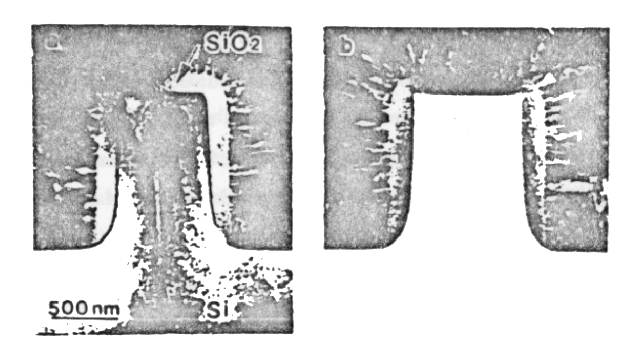
|
Modern technologies frequently involve thermal oxide grown on a non planar surface. The formation of oxide at the corner is quite critical, as any defects will lead to leakage, early breakdown or poor reliability in the final device. Experiments have shown that the oxide growth behaves quite different at different temperatures. Fig. 5.4 illustrates that already a temperature difference of 100oC can cause qualitative changes in the shape of the oxidized surface. The low temperature oxide does not only show marked thinning at the bottom of the step but also a sharp point or horn [Raf90] at the inner corners. Such a feature would greatly enhance dielectric breakdown in the oxide. On the other hand at higher temperatures a rounded oxide can be realized which is of course preferable for electric devices, bearing in mind that the necessary higher temperature budget affects previous process steps all the more.
The presented model in the previous section is capable to handle both effects introducing a surface stress. At lower temperatures (Fig. 5.6) the materials viscosity is very low and the surface stress is very small in comparison to the stresses generated by the oxide growth. At higher temperatures the surface stress is increasingly important and leads to a stronger rounding effect at the corners (Fig. 5.5).

|